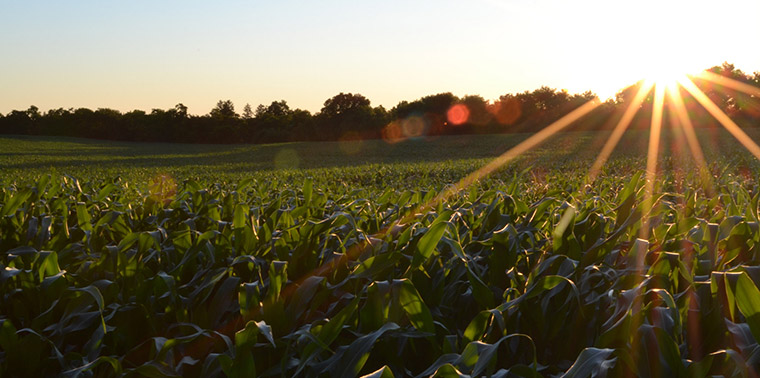January 15, 2016 — The world has a problem. A phosphorus problem.
Needed to fertilize crops, the bulk of phosphorus comes from nonrenewable phosphate rock. While China mines the most — producing almost half the world’s phosphorus — Morocco alone controls three-fourths of global phosphate rock reserves. Year by year those global reserves dwindle, leaving phosphate rock that’s ever lower in quality and ever harder to extract. At the same time, as agriculture expands over the coming decades, experts project increasing demand for mineral phosphorus.
Pair declining supply and rising demand with the lopsided geographic distribution of phosphate, and it’s not hard to see why experts think prices are likely to go up, which could threaten global food security.
At the same time, excess phosphorus, including that running off feedlots and released from wastewater treatment plants, threatens water quality and ecosystem health as it fertilizes lakes, rivers and ocean waters around the globe.
A recent study in Science of the Total Environment examined one solution to these twin problems: recycling. Looking at what recycled phosphorus could do for corn in the United States, the country’s number one crop, the study’s authors found that we’d need just 37 percent of available recyclable domestic phosphorus to fertilize all of the corn in the country.
The researchers did the math for animal manure, human waste and wasted food — all of which contain phosphorus that traces back to farmers’ fertilizer — and found that these three sources could furnish more than 1.9 billion kilograms (4.2 billion pounds) of phosphorus each year, with almost 90 percent from manure alone. That’s more than enough to sate American corn’s 724 million kilogram (1.6 billion pound) annual appetite for the element.
Spatial analysis showed that we could meet three-fourths of demand with phosphorus recycled in the county of origin. Additional phosphorus would have to travel an average of 302 kilometers (188 miles) to reach farms that need it, meaning that most corn-producing states could fill demand within their borders. Currently only 5 percent of U.S. cropland sees any manure fertilizer at all.
While the study’s conclusions are surprising, the authors caution that they don’t intend to propose public policy. Instead, their paper is meant as a “proof of concept” looking at the potential of recycling phosphorus for U.S. corn. Regulatory, logistic and economic concerns remain topics for future work to tackle.
For example, the fact that 25 percent of phosphorus for corn would have to come from counties outside that in which the corn is grown underlines the spatial disconnect between phosphorus sources and phosphorus demand in the U.S. According to the researchers, that reality — stemming from the separation of farm animals and crops — has intensified since the 1970s. Potential fixes, the researchers suggest, might involve innovative technologies for better phosphorus recycling, which would let farmers get more phosphorus from other sources nearby, making it less necessary to look beyond county border. A more direct, though perhaps more ambitious, solution might be sociopolitical efforts to bring livestock and cropland closer together again. ![]()
Editor’s note: One of the authors of this paper is employed by Ensia’s publisher, the Institute on the Environment at the University of Minnesota.
Ensia shares solutions-focused stories free of charge through our online magazine and partner media. That means audiences around the world have ready access to stories that can — and do — help them shape a better future. If you value our work, please show your support today.
Yes, I'll support Ensia!

How about a piece on what farmers are currently doing to address this issue. Thanks.
Phosphorus does not have to be applied as mineral fertilizer to work.
Please see USGS 1228 Miscellaneous Publication cites 59% of the excess Nitrogen in Chesapeake Bay is from synthetic fertilizer and 31% from raw manures mainly from concentrated animal farming systems cafos using maize and soybean.
The ability to provide all the Nitrogen needfrom winter cover legume hairy vetch as a cover crop or alfalfa as a rotation hay crop can mean this is a very solvable problem.
The Rodale Institute Farming Systems Trial shows a Wheat rye cover Soybean hairy vetch maize rotation can provide a way to support a thriving crop agriculture and provide for animal components.
The efficiency of Phosphorus utilization is a function of mycorrhizal fungi which are greatly increased in the Rodale Rotation and the system resolved environmental, energetic issues and counteracts greenhouse gases. Last by not less it is more than competitive with the current row crop systems utilization a heavy dependence on fertilizer and pesticide inputs in terms of economic potential.
The interest in remedying global warming is best served by implementing incentives to farmers who can improve the Carbon and Nitrogen stocks in soil and take them out of our over enriched air streams.
Phosphorus should be recycled via a mixed crop and animal system which improves the quality of crops animals and the soils.
It is a very hard sell to repatriate sludge from humans into crop systems and they also are rife with heavy metals and industrial contaminants.
The recycling we need is something that needs to have composting as a central component and the elimination of toxic components from our waste streams.
Moving human and animal wastes 130 miles in a bulky form is not presently economic or logistically opportune.